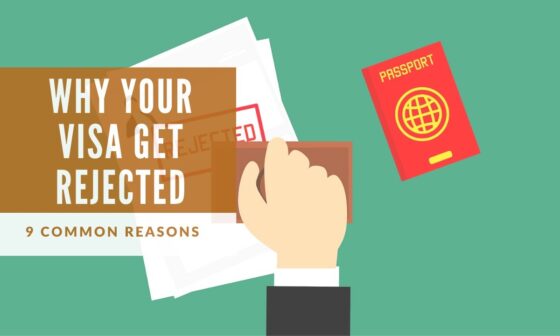Countries Where You Can Study Free or Nearly Free (No Hidden Fees)
 How Students Are Winning $50,000 Scholarships Using This Simple Essay Strategy
How Students Are Winning $50,000 Scholarships Using This Simple Essay Strategy
Top countries where you can study free or nearly free: yes, they actually exist! Around the world, several nations have made higher education accessible to both domestic and international students without the crushing burden of tuition fees. From the tuition-free universities of Germany to the affordable student life in Norway and Austria, these countries prove that quality education doesn’t always come with a hefty price tag.
In this guide, we’ll explore the best destinations where students can earn world-class degrees with minimal financial stress, understand how these systems work, and discover hidden benefits that go beyond just “free tuition.” Whether you’re a high school graduate dreaming of studying abroad or a parent seeking cost-effective education for your child, this article will walk you through everything you need to know — from eligibility to living expenses.
Why “Countries Where You Can Study Free or Nearly Free (No Hidden Fees)” Matter
The phrase “study abroad” often conjures images of hefty tuition bills, mounting debt, and financial stress. But according to a comprehensive list by Top Universities, there are indeed countries where you can study abroad for free or for an extremely affordable cost—even for international students. (Top Universities)
Here’s why this matters:
- Reduced student debt: Studying in a tuition-free or low-fee country means you can graduate with little or no debt, giving you more freedom in your career and life choices.
- Access to global education: Many of these countries offer programs in English and have universities ranked internationally.
- More predictable finances: “No hidden fees” means fewer surprises—what you see is what you pay, generally speaking.
- Better ROI (return on investment): With lower cost and high quality, your education becomes a smarter investment.
In short: seeking out countries where you can study free or nearly free is a strategic move for ambitious students who want value, quality and outcomes.
What “Free or Nearly Free” Really Means
When we say “study free or nearly free”, we’re referring to the following categories:
- Tuition-free public universities, regardless of nationality, or only minimal administrative fees (e.g., €100-€400/year).
- Very low tuition (e.g., under €1,000-€2,000/year) for international students, combined with a cost of living that is manageable.
- Transparent cost structure: minimal hidden fees (registration, application, infrastructure) and clear information about living expenses.
- Programs in English, or acceptable language of instruction available to international students.
According to Erudera, several countries offer bachelor’s or master’s programs for international students that meet these criteria. (Erudera)
It’s important to remember, however, that living costs and language requirements can still vary widely “tuition-free” doesn’t always mean “free everything”.
Top Countries Where You Can Study Free or Nearly Free (No Hidden Fees)
Here are some of the most attractive study-abroad destinations right now—where cost is low or zero and the promise is genuine.
1. Germany
- Public universities in Germany generally charge no tuition fees for undergraduate programs for both domestic and international students.
- Students still pay administrative and semester fees (≈€100-€400) but overall cost is very low.
- Many programs are offered in English, especially at the master’s level, making them accessible to international students.
2. Norway
![]()
- Norway offers tuition-free education at public universities for all students—though recent changes mean non-EU/EEA students may face fees in some cases—so always check current policy.
- However, living costs are high, which means budgeting is crucial.
- Great student experience and strong academic systems.
3. Austria
![]()
- While not fully free for all international students, Austria offers very low tuition (for example around €1,000-€2,000/year) making it almost “nearly free”. (Spain Internship)
- High quality of life, strong universities, and often English-taught programs.
4. Finland
![]()
- Finland offers tuition-free education for EU/EEA students; for non-EU students some fees apply (though scholarship support exists).
- Transparent programs, strong pedagogy, and good international student support.
5. Czech Republic (for local-language programs)
![]()
- Public universities offer free tuition if you study in the Czech language. English-taught programs may charge fees, but they remain low comparatively. (Accreditedschoolsonline.org)
- Great choice if you can learn or already speak Czech; low cost of living too.
6. Greece
- For EU/EEA students, Greece offers tuition-free or very low-fee public higher education in many cases; for non-EU students the fees are still comparatively low. (The FundMyTravel Blog)
- Offers Mediterranean lifestyle plus affordable study.
Comparison Table: Tuition, Living Costs & Key Eligibility
Here’s a simplified table to help you compare key destinations:
| Country | Approx Tuition for International Students | Estimated Monthly Living Cost* | Key Notes |
|---|---|---|---|
| Germany | €0 tuition (public universities) | ~€900-€1,200 | Many English programs; admin fees apply |
| Norway | €0 tuition (some fees for non-EU) | ~€1,200-€1,500 | High living cost; strong support |
| Austria | ~€1,000-€2,000/year | ~€800-€1,100 | Low fee, high quality |
| Finland | €0 (EU/EEA) / tuition for non-EU | ~€900-€1,300 | Strong English programs, scholarship focus |
| Czech Republic | €0 if studied in Czech language; low if in English | ~€600-€800 | Budget living; language may matter |
*Estimated based on typical student lifestyle; actual costs vary by city and personal spending.
How to Choose the Right Country If You Want to Study Free or Nearly Free
Here are factors to help you decide which destination fits you best:
- Language of instruction: If you don’t speak the local language, prefer programs offered in English.
- Eligibility for “free” tuition: Some countries waive tuition only for EU/EEA citizens or only for certain levels—check eligibility for your nationality.
- Cost of living: Even if tuition is free, these countries often have higher cost of living (e.g., Nordic countries) — factor this in.
- Hidden costs: Check for semester fees, health insurance, housing, and visa costs — “no hidden fees” means you read the fine print.
- Job/Internship prospects: If you plan to work part-time or stay post-graduation, examine the country’s immigration and work policies.
- Quality & recognition: Ensure the university and degree are internationally recognized—is it accredited? Does it support your career goals?
It’s Not Just Tuition What About Daily Finance?
Even in tuition-free systems, you’ll need to budget for living expenses, travel, books, housing, food, and other daily costs. A few practical tips:
- Apply early for student housing—it’s often cheaper than private rentals.
- Consider cities outside major capitals—they often cost less.
- Check work rights: many countries allow students to work part-time (e.g., 20 hours/week) which helps with cost.
- Look for scholarships or grants even in “tuition-free” systems—they can cover living costs or help with relocation.
- Build an emergency fund—unexpected costs happen (visa renewal, health insurance, travel).
Common Myths and Realities: Study Free Doesn’t Mean Zero Cost
Here are some truths and clarifications:
- Myth: “Free tuition means I pay nothing at all.”
Reality: In many cases you still pay semester-fees, admin charges, or living costs; always check the full cost structure. - Myth: “Any program in these countries is free for international students.”
Reality: Sometimes free tuition only applies to citizens or EU/EEA students; or only to programs taught in the local language. For example, in Finland non-EU students may pay. (Mastersportal) - Myth: “Cheaper tuition equals lower quality.”
Reality: Many tuition-free/low-tuition countries have world-class universities, strong research, and excellent outcomes. - Myth: “High cost of living ruins the benefit of free tuition.”
Reality: While living is a factor, in many cases the savings on tuition still make it a strong deal—especially if you choose affordability-friendly locations.
Step-by-Step: How to Move Towards Studying Free or Nearly Free
- List your top 3 destination countries from the ones above or others you’ve found.
- Check eligibility criteria for your nationality, program language, tuition fees.
- Select universities and programs that offer English-taught degrees and clearly list “no tuition” or low tuition for international students.
- Calculate full cost: tuition + semester/administrative fees + living costs + nutrition/housing + visa/insurance.
- Apply early and budget for first year costs (many students use savings, part-time work, scholarships).
- Research part-time work rights: how many hours you can work, salary rates, and whether graduates can stay post study.
- Write admission essays and prepare documents (transcripts, proof of English, reference letters) to avoid admission surprises.
- Stay mindful of “hidden fees”: always read the fine print about “non-refundable fees”, “student union fees”, “health insurance mandatory”.
- Plan for transition and living abroad: consider accommodation, budgeting, health insurance, visa renewal.
- Stay flexible and backup plan: have a plan if your first choice doesn’t work out or costs turn out higher than expected.
Conclusion
In a world where the cost of higher education continues to climb, selecting one of the countries where you can study free or nearly free (no hidden fees) gives you a powerful advantage. With countries like Germany, Norway, Austria, Finland and the Czech Republic offering tuition-free or ultra-low-fee programs even for international students you can pursue your goals without incurring massive debt.
Yes you’ll still need to budget, check eligibility, and plan your stay. But the most important takeaway is this: your education doesn’t have to mean lifelong debt. If you choose well, study smart and budget wisely, you can build your future in an internationally renowned university without paying the usual global price.
Start your exploration now, choose a destination that fits your goals and finances, apply early, and leverage the opportunity. Your global education journey could begin with a “free or nearly free” ticket and an enormous possibility for your future.







1 comment
Your point of view caught my eye and was very interesting. Thanks. I have a question for you.